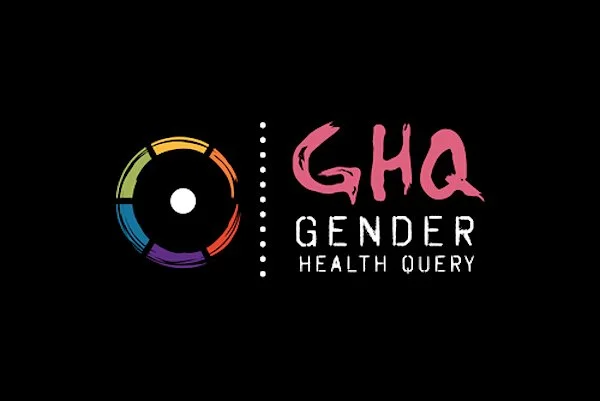Links About Autism and Gender Dysphoria
NEWS LINKS
There is a known link between gender dysphoria and autism spectrum issues. Below are several links regarding this topic.
1) This is a study (Stagg 2016) confirming higher rates of ASD in trans and non-binary-identified individuals:
Results
Individuals with autism spectrum disorder (ASD) or meeting the AQ cut-off score for ASD were over-represented in both the transgender and nonbinary groups. The key variables differentiating the transgender and nonbinary groups from the cisgender group were systematising and empathy. Levels of autistic traits and cases of ASD were higher in individuals assigned female at birth than those assigned male at birth.
Conclusions
A proportion of individuals seeking help and advice about gender identity will also present autistic traits and in some cases undiagnosed autism. Lower levels of empathy, diminished theory of mind ability and literalness may impede the delivery of effective support. Clinicians treating transgender and nonbinary individuals, should also consider whether clients, especially those assigned female at birth, have an undiagnosed ASD.
2) Another study, Kuvalanka et. al, 2017, discusses the views of mothers with trans-identified ASD, children.
3) Mahfouda et. al, 2019, is a study that acknowledges high rates of mental health problems in ASD and trans-identified youth:
Abstract: Research suggests an overrepresentation of autism spectrum diagnoses (ASD) or autistic traits in gender diverse samples, particularly in children and adolescents. Using data from the GENTLE (GENder identiTy Longitudinal Experience) Cohort at the Gender Diversity Service at the Perth Children’s Hospital, the primary objective of the current retrospective chart review was to explore psychopathology and quality of life in gender diverse children with co-occurring ASD relative to gender diverse children and adolescents without ASD. The Social Responsiveness Scale (Second Edition) generates a Diagnostic and Statistical Manual of Mental Disorders (DSM-5) score indicating a likely clinical ASD diagnosis, which was used to partition participants into two groups (indicated ASD, n = 19) (no ASD indicated, n = 60). Indicated ASD was far higher than would be expected compared to general population estimates. Indicated ASD on the Social Responsiveness Scale 2 (SRS 2) was also a significant predictor of Internalising behaviours (Anxious/Depressed, Withdrawn/Depressed, Somatic Complaints, Thought Problems subscales) on the Youth Self Report. Indicated ASD was also a significant predictor of scores on all subscales of the Paediatric Quality of Life Inventory. The current findings indicate that gender diverse children and adolescents with indicated ASD comprise an especially vulnerable group that are at marked risk of mental health difficulties, particularly internalising disorders, and poor quality of life outcomes. Services working with gender diverse young people should screen for ASD, and also provide pathways to appropriate care for the commonly associated mental health difficulties.
4) There is an article in Spectrum on autism and treatment guidelines that discredits the idea their gender obsession may be due to an over-focusing problem.
“New clinical guidelines address gender dysphoria in autism”
My argument is you need to understand the normal course of gender development for people with autism first.
5) This link from Seattle Children’s Hospital reviews treatment guidelines for gender dysphoric youth with autism.
6) Aeon has an article that discusses the harmful effects of attempts to depathologize autism spectrum disorders and reframe them as “neurodiversity” and an identity-politics activist issue. There has been a very similar trend in trans discourse in the mental health profession, where trans identity is framed as a normal part of gender expression (yet requires risky cross-sex hormones and surgeries that require a diagnosis in order for insurance to cover it.)
It is, therefore, time to start thinking differently about neurodiversity, and to recognise the importance of free speech in the public discourse on autism, because if neurodiversity means anything, it means accepting that we all think differently, and that not everyone takes pride in being autistic.
7) This study is a Yale review.
“Gender Identity and Autism Spectrum Disorders:”
it is unclear whether the most fruitful way to conceptualize this issue is in terms of comorbidity. A more complex approach that attempts to understand gender in developmental terms is potentially more salient for both research and clinical purposes. Our current understanding about the unique social development of individuals with ASD, which may impact the process of gender identity formation, underlines the need for such an approach...
...an exploration of sexuality seems especially pertinent given recent findings that most children with gender-related concerns eventually identify with their natal gender following puberty and frequently adopt homosexual and bisexual identities. It is possible that individuals with ASD may experience similar trajectories in their gender narratives, but potentially follow a different timeline than normally developing individuals owing to reduced social interaction and fewer opportunities to explore their sexual identity.
8) A quote (Glidden 2016) below:
Results
The literature investigating ASD in children and adolescents with gender dysphoria showed a higher prevalence rate of ASD compared with the general population. There is a limited amount of research in adults. Only one study showed that adults attending services for gender dysphoria had increased ASD scores. Another study showed a larger proportion of adults with atypical gender identity and ASD.
9) An adult autogynephile believes AGP is a syptom of autism in this video.
“Autogynephilia is a symptom of autism, not transgender identity"
10) Mahfouda (2019) is an Australian study:
Conclusions
This study expanded on previous research to replicate the finding of higher levels of autistic traits and ASD in a clinic-referred gender diverse sample in Australia. We found that gender diverse children and adolescents with indicated ASD comprise an especially vulnerable group that are at marked risk of mental health difficulties, particularly internalising disorders, and poor quality of life. These findings should be considered when developing best practice for working with gender diverse young people with ASD to ensure that their health care meets their unique needs.
11) Leef (2019):
The results of our study showed evidence of both specificity and nonspecificity with regard to ASD traits and caseness. Future research can adopt the principle of multifinality to understand better why only a minority of children with GD have a co-occurring diagnosis of ASD, but the majority does not.
12) Dr. Strang is a major researcher in the area of autism spectrum and gender dysphoria and a pro-transition, affirmitive model advocate.


